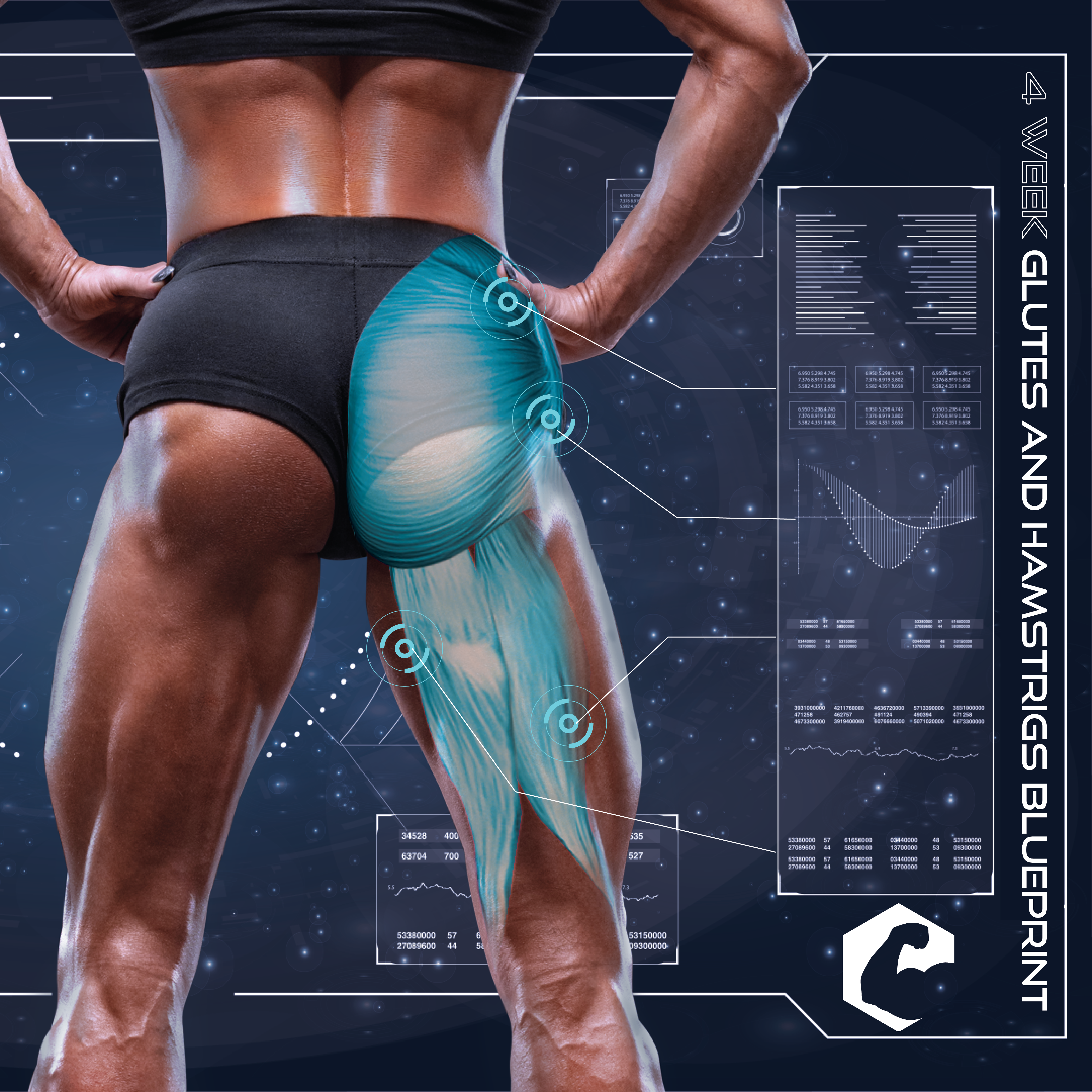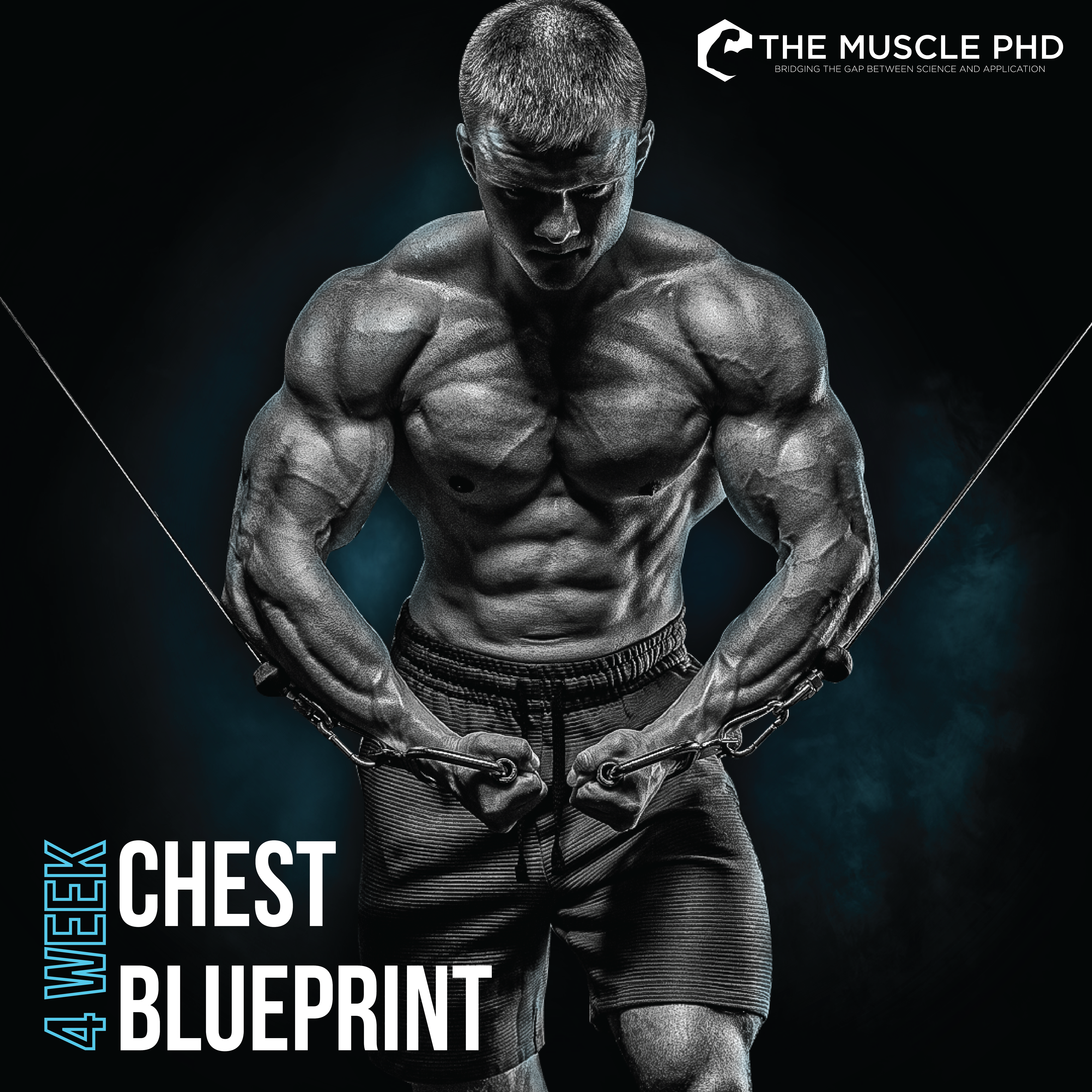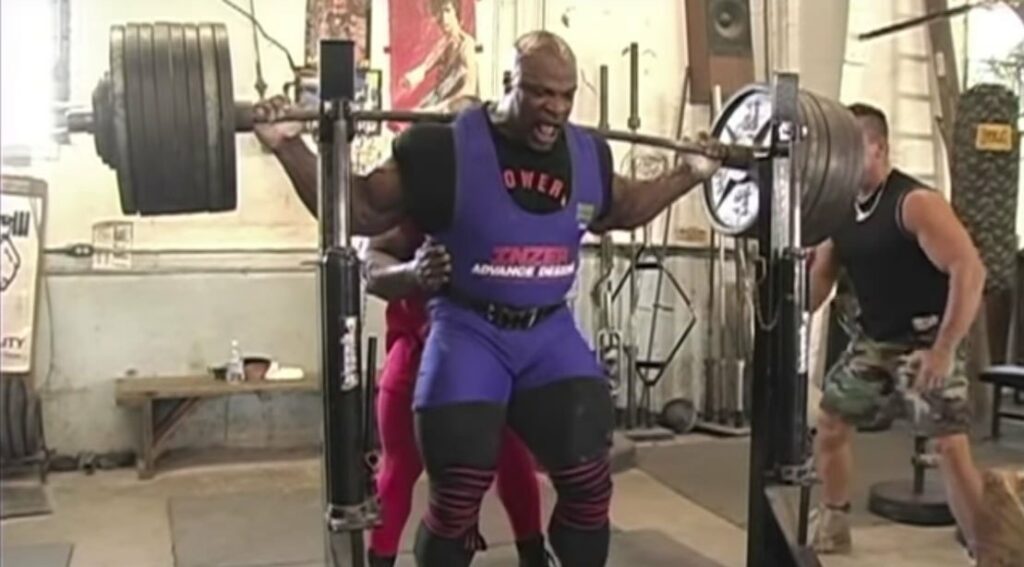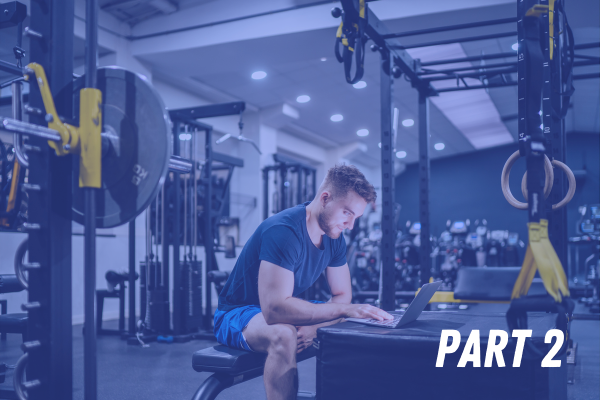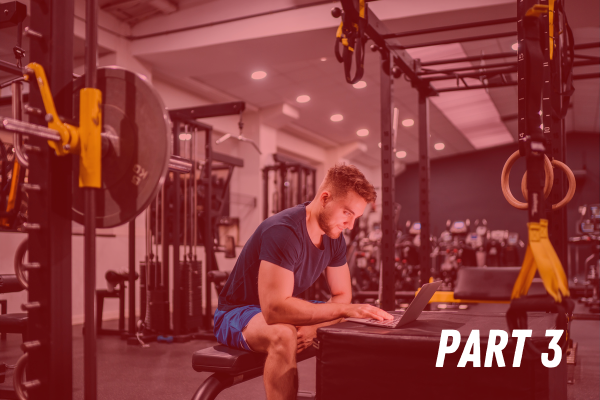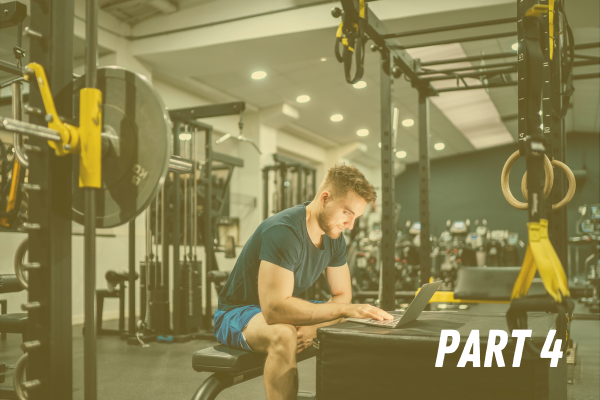Introduction
It’s become rather well-established that the hamstrings muscle group has very little involvement in the squat exercise when considering muscle activation – several studies have shown minimal hamstrings activation during squats (3,8,9,12,15). Let’s get into the nitty gritty of why this may be and why the hamstrings are still incredibly important for squats.
Anatomy and Mechanics
First, let’s start with a quick anatomy and biomechanics review. The hamstrings group consists of three muscles, the biceps femoris, the semitendinosus, and the semimembranosus – listed in order from lateral to medial. The hamstrings group is mainly responsible for the actions of hip extension and knee flexion (7).
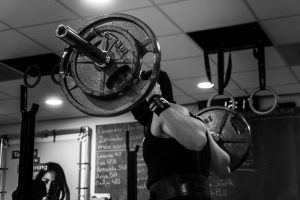 This creates a bit of a paradox when considering the ascent of a squat motion – how can the hamstrings extend the hip when the knee is also extending? The hamstrings are able to perform this motion through a property known as preferential activation – essentially one portion of the hamstrings group is responsible for extending the hip while the other is concerned with flexing the knee (1). This means that the knee flexor portion is mostly turned off during the ascent phase of a squat. One researcher suggests that overall hamstrings activation in a squat is low due to this phenomenon (16) – one portion is always relaxed while the other is active which would result in a lower overall activation.
This creates a bit of a paradox when considering the ascent of a squat motion – how can the hamstrings extend the hip when the knee is also extending? The hamstrings are able to perform this motion through a property known as preferential activation – essentially one portion of the hamstrings group is responsible for extending the hip while the other is concerned with flexing the knee (1). This means that the knee flexor portion is mostly turned off during the ascent phase of a squat. One researcher suggests that overall hamstrings activation in a squat is low due to this phenomenon (16) – one portion is always relaxed while the other is active which would result in a lower overall activation.
The inherent biomechanics create an interesting issue for testing hamstrings activation during a squat, but let’s examine what else might prevent science from confirming what many seasoned lifters know to be true – hamstrings strength is incredibly important for squatting.
Issue # 1: Intensity and Intent
The main issue you’re going to see in most muscle activation studies is the fact that they typically don’t use much weight/higher intensities or sets to failure (3,8,9). This is usually due to safety concerns, logistics issues with monitors and cables, and even subject lifting experience. The lack of weight or fatiguing scenarios has huge implications for the hamstrings and squat strength that we’ll touch on in Issue # 3. The main study that examined maximum effort squats placed the subjects into an isometric position (15) which could reduce hamstrings activation since the hips are not actually extending independently of knee motion. Another issue we see is that one study controls the tempo of the lift, resulting in a slower concentric portion (8). We know from other studies that maximizing the intended and overall velocity of a lift can increase muscle activation (14) so slowing the lift will obviously not produce the best results.
We do see in one study that increasing the load or weight lifted resulted in slightly greater hamstrings activation in the squat (12). This study still did not examine the effects of maximum weights or fatiguing conditions so it’s tough to identify where the hamstrings might help out in the squat.
Issue # 2: Gender Differences
One interesting note when it comes to testing hamstring activation during the squat is that women do not activate their hamstrings as well as men do (3,11). While most studies acknowledge this finding and contrast the gender difference, this issue carries a ton of real world weight when it comes to females who want to build bigger hamstrings and stronger squats.
One of the less exciting anatomical differences between men and women is the quadriceps angle, or, Q angle. The Q angle is the resultant angle when you intersect two anatomical lines – one line that connects the pelvis to the shin bone and another line that connects the thigh bone to the center of the knee cap (5). Women typically have a much greater Q angle than men due to their pelvic anatomy that results in wider hips (5).
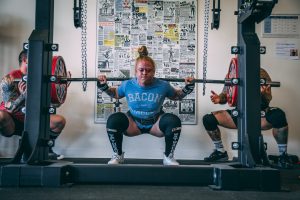 The Q angle may be one of the main reasons why females do not activate their hamstrings as well as males. Research shows that muscle coordination and activation patterns are different when comparing subjects with small Q angles to subjects with large Q angles (5). Another interesting study found that hamstrings activation decreases when hip abduction angles increase. This specific study tested hamstrings activation in a prone hip extension exercise – think something like a reverse hyperextension but with bent knees. When subjects were told to widen their feet, hamstrings activation decreased (6). It’s very possible that abducting the hip could have actively created a greater Q angle which may have contributed to the decrease in activation.
The Q angle may be one of the main reasons why females do not activate their hamstrings as well as males. Research shows that muscle coordination and activation patterns are different when comparing subjects with small Q angles to subjects with large Q angles (5). Another interesting study found that hamstrings activation decreases when hip abduction angles increase. This specific study tested hamstrings activation in a prone hip extension exercise – think something like a reverse hyperextension but with bent knees. When subjects were told to widen their feet, hamstrings activation decreased (6). It’s very possible that abducting the hip could have actively created a greater Q angle which may have contributed to the decrease in activation.
Issue #3 – Max Squats and Preferential Activation
Now we’ll really get into the primary issue in hamstrings and squats studies – none of them examine maximum or fatiguing squats. We know that the hamstrings can be preferentially activated (1) and we can see evidence of this when comparing squats with exercises like Romanian deadlifts and good mornings – both of which create much greater hamstrings activation (3). Other studies report that the hamstrings are highly active in several hip extension exercises, not just limited to good mornings and RDLs (10).
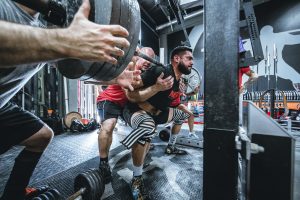 Now let’s use that knowledge and apply it to something we’ve all seen in the gym – someone maxing on squats or doing squats to failure. What position do they get into? Of the primary joints involved in a squat, the knees are, by far, the weakest. Once your quads fatigue or begin to fail during a squat, you immediately begin to shift the load to your hips and lower back. AKA, you end up in a quasi-good morning position. Now might be a good time to have some strong hamstrings on stand-by.
Now let’s use that knowledge and apply it to something we’ve all seen in the gym – someone maxing on squats or doing squats to failure. What position do they get into? Of the primary joints involved in a squat, the knees are, by far, the weakest. Once your quads fatigue or begin to fail during a squat, you immediately begin to shift the load to your hips and lower back. AKA, you end up in a quasi-good morning position. Now might be a good time to have some strong hamstrings on stand-by.
Conclusion
Louie Simmons of Westside Barbell is probably the most well-known powerlifting coach in the world and has led several lifters to 1000+ pound squats and many world records. One of the main staples of Westside-style training is hammering the posterior chain – hamstrings, glutes, lower and upper back. Louie claims that these are the most important muscle groups for developing monster squats.
The strength and conditioning field is an interesting field in that the applied sector is almost always ahead of the research and development sector. Training the hamstrings for squat strength is absolutely one of those scenarios and it might be a long time before we see scientists realize this and examine it further.
In closing, the hamstrings are not overly involved in submaximal squats but they represent a massive limiting factor in maximal squats or fatiguing squat sets. Don’t let anyone tell you that hamstrings strength is irrelevant for squats due to the oft-cited research in this paper and many others. Hamstrings strength is absolutely necessary for increasing your squat max and improving squat performance over fatiguing sets to failure. Adding exercises that focus on hip extension to your training is a key component of increasing your squat and overall lower body gains. Good mornings, RDLs, hip thrusts, and back extensions are all great choices.
References
- Bourne, M. N., Williams, M. D., Opar, D. A., Al Najjar, A., Kerr, G. K., & Shield, A. J. (2017). Impact of exercise selection on hamstring muscle activation. British Journal of Sports Medicine, 51(13), 1021-1028.
- Comfort, P., & Kasim, P. (2007). Optimizing squat technique. Strength and Conditioning Journal, 29(6), 10.
- Ebben, W. P. (2009). Hamstring activation during lower body resistance training exercises. International Journal of Sports Physiology and Performance, 4(1), 84-96.
- Hales, M. E., Johnson, B. F., & Johnson, J. T. (2009). Kinematic analysis of the powerlifting style squat and the conventional deadlift during competition: is there a cross-over effect between lifts? The Journal of Strength & Conditioning Research, 23(9), 2574-2580.
- Heiderscheit, B. C., Hamill, J., & Van Emmerik, E. A. (1999). Q-angle influences on the variability of lower extremity coordination during running. Medicine and Science in Sports and Exercise, 31(9), 1313-1319.
- Kang, S. Y., Jeon, H. S., Kwon, O., Cynn, H. S., & Choi, B. (2013). Activation of the gluteus maximus and hamstring muscles during prone hip extension with knee flexion in three hip abduction positions. Manual Therapy, 18(4), 303-307.
- Marieb, E. N., Wilhelm, P. B., & Mallatt, J. (2014). Human Anatomy (Vol. 784). Pearson.
- McCaw, S. T., & Melrose, D. R. (1999). Stance width and bar load effects on leg muscle activity during the parallel squat. Medicine and Science in Sports and Exercise, 31, 428-436.
- McCurdy, K., O’Kelley, E., Kutz, M., Langford, G., Ernest, J., & Torres, M. (2010). Comparison of lower extremity EMG between the 2-leg squat and modified single-leg squat in female athletes. Journal of Sport Rehabilitation, 19(1), 57-70.
- Ono, T., Higashihara, A., & Fukubayashi, T. (2011). Hamstring functions during hip-extension exercise assessed with electromyography and magnetic resonance imaging. Research in Sports Medicine (Print), 19(1), 42.
- Palmieri-Smith, R. M., McLean, S. G., Ashton-Miller, J. A., & Wojtys, E. M. (2009). Association of quadriceps and hamstrings cocontraction patterns with knee joint loading. Journal of Athletic Training, 44(3), 256-263.
- Paoli, A., Marcolin, G., & Petrone, N. (2009). The effect of stance width on the electromyographical activity of eight superficial thigh muscles during back squat with different bar loads. The Journal of Strength & Conditioning Research, 23(1), 246-250.
- Q Angle Image. Retrieved from: https://special-tests.com/knee-tests/q-angle-test/
- Sakamoto, A., & Sinclair, P. J. (2012). Muscle activations under varying lifting speeds and intensities during bench press. European Journal of Applied Physiology, 112(3), 1015-1025.
- Schaub, P. A., & Worrell, T. W. (1995). EMG activity of six muscles and VMO: VL ratio determination during a maximal squat exercise. Journal of Sport Rehabilitation, 4(3), 195-202.
- Yamashita, N. (1988). EMG activities in mono-and bi-articular thigh muscles in combined hip and knee extension. European Journal of Applied Physiology and Occupational Physiology, 58(3), 274-277.
From being a mediocre athlete, to professional powerlifter and strength coach, and now to researcher and writer, Charlie combines education and experience in the effort to help Bridge the Gap Between Science and Application. Charlie performs double duty by being the Content Manager for The Muscle PhD as well as the Director of Human Performance at the Applied Science and Performance Institute in Tampa, FL. To appease the nerds, Charlie is a PhD candidate in Human Performance with a master’s degree in Kinesiology and a bachelor’s degree in Exercise Science. For more alphabet soup, Charlie is also a Certified Strength and Conditioning Specialist (CSCS), an ACSM-certified Exercise Physiologist (ACSM-EP), and a USA Weightlifting-certified performance coach (USAW).



